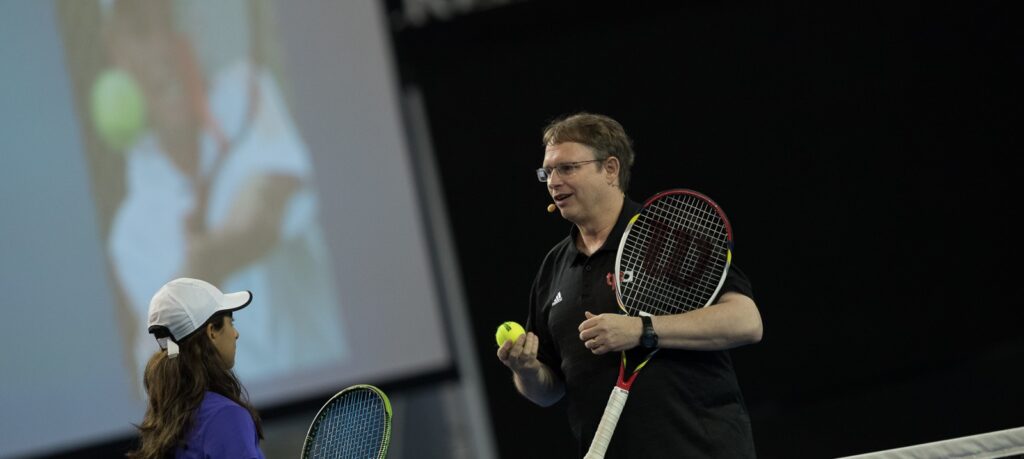

Photo credit: Front Row Studios -2017 Australian Open Grand Slam Coaches Conference
PASSING SITUATIONS – TACTICAL CONSIDERATIONS
‘Passing’ situations occur when responding to an opponent who is approaching or at net. The opponent typically has the advantage since they are closer to the net, putting the passer under pressure.
All the passing shot options are geared to challenge a net player’s timing by controlling space & time, making it difficult for them to put the ball away.
- The main tactical goal of passing is to control space since the net player has cut off the space. Aiming away from them (to the sides or over their head) or putting the ball low at their feet to make them hit upward.
The second goal is to control time. Making the ball travel faster challenges their timing, whether it is at them or flies by them quicker through the open court.
2-Shot Pass
To alleviate some of the pressure and minimize the advantages of the net opponent, the most effective passing tactic is to perform a ‘2-shot pass’. This is a 1-2 combination like in boxing, where the first punch is to set up the punch that actually does the damage.
TACTICAL OPTIONS
The passing options ‘tree’ below outlines the main response options (not every possibility). For example, following the Green elements down the tree, we see from the deuce side baseline the player hits a lob crosscourt with topspin.

We can combine options to create useful Passing ‘Tactical Packages’ using the three ‘Shot Trajectories’ from the options tree which describe the path of the ball through he air:
- ‘Drive’: A level shot with more power. Typically used to challenge an opponent’s timing or send it through the open court.
- ‘Lob’: A high shot designed to go over the head of the opponent.
- ‘Dip’: A short arc designed to go to the opponent’s feet or land short in the court at a sharp angle, making the opponent stretch.
2-Shot passing combinations can be initiated from each of the ‘Shot Trajectories’:
1. DIP COMBINATIONS
- Dip/Lob
- Dip/Drive
- Double Dip
2. DRIVE COMBINATIONS
- Drive/Lob
- Drive/Dip
- Drive/Drive
3. LOB COMBINATIONS
- Lob/Drive
- Lob/Dip
PRACTICING
The first stage is to get players to learn the different passing shot trajectories (‘Dip’, ‘Lob’, ‘Drive’). These need to be practiced when receiving approach shots or volleys. For example, when the player is pulled out wide and on the run.
Once players can execute the three trajectories required for passing shots, the 2-shot combinations should be trained.
CONCLUSION
Dealing with opponents approaching or at the net means executing passing shots under pressure. The most effective tactic is to pass in 2-shot combinations. This puts less pressure on the pass since the 1st shot sets up a less risky option with a better chance of success. Practicing includes mastering the three basic passing shot options (‘Drive’, ‘Lob’, ‘Dip’) and using them in combinations.
Leave a Reply